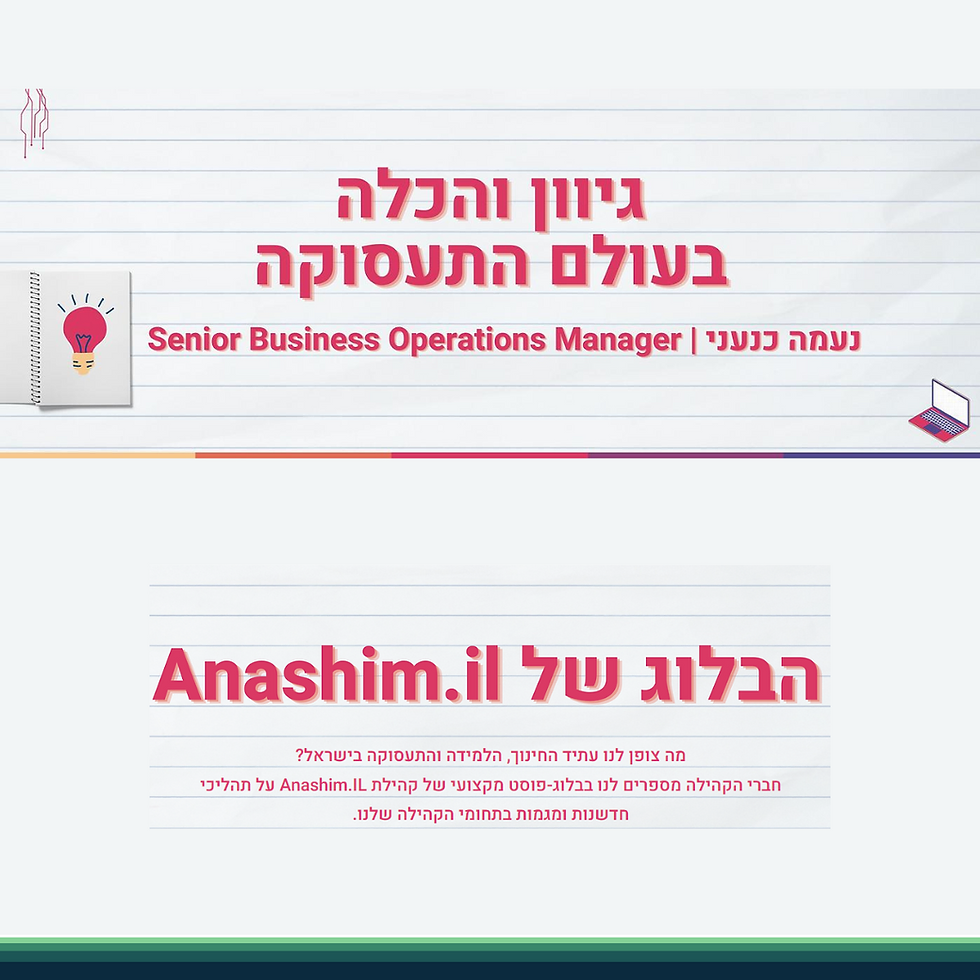Mastering OKRs: Driving Organizational Alignment Through Effective OKR Implementation
- Naama Cnaani
- Sep 11, 2023
- 2 min read
In recent years, more and more organizations have shown interest in implementing OKRs (Objectives and Key Results) as a method to implement strategies and work plans. OKRs are used by many companies to set goals that help define and track progress toward specific measurable objectives. The main goal of OKRs is to keep teams and individuals aligned with the organization’s overall strategy and priorities and ensure that everyone is working towards the same objectives.
The OKR methodology consists of two main components: objectives and key results.
Objectives are high-level goals that the organization aims to achieve.
Key results are specific indicators that measure progress toward achieving the objectives. They should be quantitative and trackable over time.
Objectives define what the organization wants to accomplish, while key results help monitor progress toward those goals.
OKRs offer several key highlights that make it an effective goal-setting framework:
Alignment: OKRs help ensure everyone in the organization is working towards the same goals, promoting alignment and focus.
Transparency: Progress on OKRs is regularly monitored and reported to the entire organization, fostering transparency.
Flexibility: OKRs allow organizations to be agile and respond quickly to market or organizational changes by adjusting activities quickly.
Focus: By defining a limited number of impactful goals, OKRs help organizations prioritize the most critical objectives.
How should we implement OKRs?
Management team alignment - Present the OKRs to the organization’s leadership, explain the benefit to the organization’s business goals, and get the leadership team’s buy-in. This is a crucial initial step.
Training and implementation - Provide organization training about what are OKRs, what are their benefits, and how are we going to implement and use them in our organization. Explain the expectations and role each owner will have and the overall process. In large organizations, consider starting with a POC in one department before implementing OKRs in the entire organization. This way you can learn what should be improved before you start the implementation across the whole organization.
Set organizational level OKRs - Once you have leadership buy-in and the organization understands what is going to happen and what they should do, you can start setting the OKRs. The first step is to define 3–5 organizational OKRs.
Set Department/Team OKRs - Once the organizational OKRs are agreed on and communicated, we will cascade OKRs to the department level. This connects the departments to the organizational goals and aligns departmental OKRs with organizational OKRs.
Review OKRs’ progress - Define a review cycle to track and review the progress of each OKR. This will help us understand if we are on track, and if not, make the needed changes to ensure we reach the KRs we set. Or, in rare cases, amend the KRs.
Evaluate and improve - At the end of the OKR cycle, review the results and the process, assess lessons learned, and define new objectives. Continual improvement is key.
Following this process engages leadership, cascades alignment, provides transparency, and facilitates regular dialog on status and learnings. Effective OKR implementation requires continuous communication, refinement, and commitment at all levels. In the following article, I will review the most common OKR implementation risks that you should try to avoid.
Link to the article on meduim.com




Comments